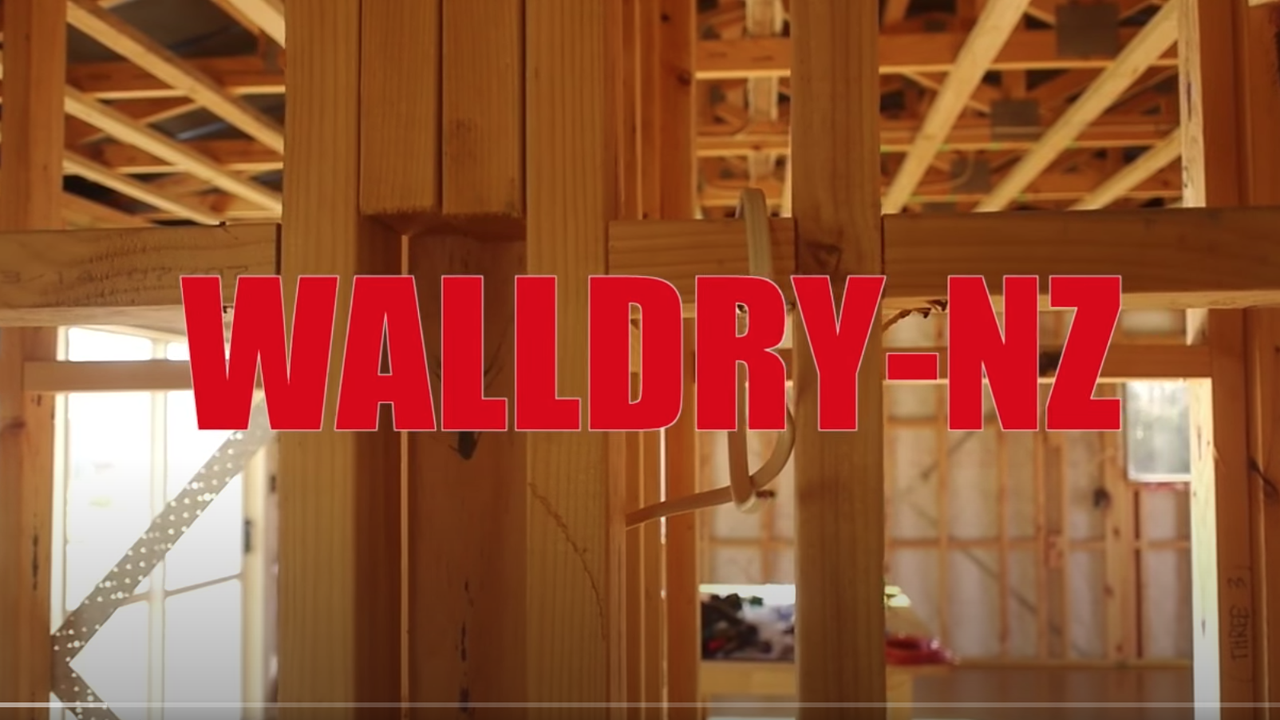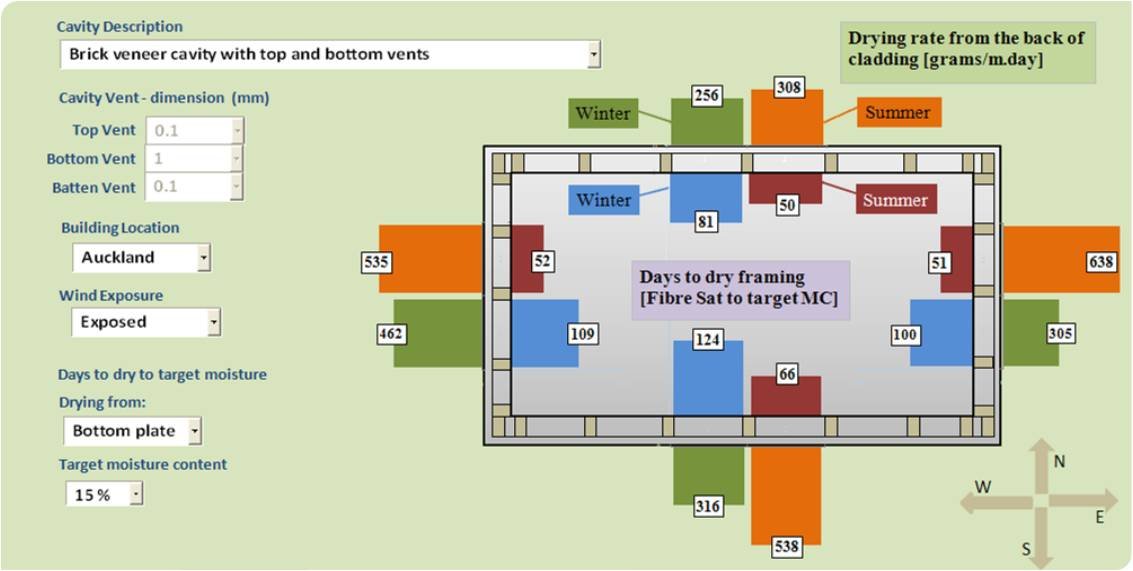This involved achieving two things:
- Developing a calculation basis for moisture design: Previously, we worked on the development of WUFI - a program that models heat and moisture transport in building materials - with Germany's Fraunhofer Institute and incorporated findings from the experiments within the WAVE programme
- Mapping out the material properties that lead to moisture-tolerant walls and those that don't: Designers can then be sure designs using new materials will be successful.
Projects in the weathertightness stream
Rigid air barriers
The aim of this project was to provide guidance to industry about the use of rigid sheathing focusing on two factors - airtightness and weathertightness. Walls of newly built timber-framed buildings in New Zealand generally have a drainage cavity but do not have sheathing. Overseas, particularly in North America, the typical construction is slightly different - sheathing is generally nailed to the framing before attaching the building wrap, and often a separate air barrier system is used as well to meet building code requirements for airtightness. In New Zealand, sheathing is now mandatory for buildings in the extra high wind zone as it is perceived to offer a lower risk of weathertightness failure. Sheathing provides a more robust cavity and prevents the insulation bulging, which would increase the chance of water bridging from the cladding to the framing line.
A contributing factor to the leaky home disaster was the use of products and techniques that hadn't been assessed for use in New Zealand. The use of sheathing is not perceived to represent a huge risk - quite the opposite - but we wanted to ensure we did not walk straight into another leaky home situation. We also wanted to be able to quantify the benefits of using sheathing.
Three study reports related to the work on rigid air barriers are available:
- SR298 Rigid sheathing and pressure equalisation in New Zealand
- SR299 Rigid sheathing and airtightness in New Zealand
- SR300 An analysis of wind-driven rain in New Zealand
WALLDRY-NZ
WALLDRY-NZ is a Microsoft Excel-based tool developed to help building professionals appreciate the affect of design choices on the weathertight performance of walls. You can choose cladding type, vent size, cavity type and building location to look at the effect on the drying time of wet framing and the drying rate from the back of the cladding.
WALLDRY-NZ is intended for use as an educational tool only - it is not intended as a Verification Method for wall design.
- Download the latest version of WALLDRY-NZ (May 2013). Note: You may download and use it at your own risk.

The science behind WALLDRY- NZ

More information
Explore the range of web and print resources related to this stream of the WAVE programme.
-
BRANZ Weathertight website
This comprehensive website covers the background to the issues and provides extensive advice on design and construction to ensure houses are weathertight.
View more -
Module: Introduction to moisture
Moisture can make its way into a house in a range of ways - exterior, interior, ground and construction. This module focuses on the effects of moisture on houses and the people who live in them.
View more -
Drainage and evaporation from window sill trays
A 2009 article from the Journal of Building Physics looking at sloped versus flat trays in windows used in temperate New Zealand.
View more -
Acceptable designs for timber framed parapet walls
A 2010 CIB conference paper that aimed to experimentally verify whether a parapet design detail from the New Zealand compliance document for weathertightness (E2/AS1) resisted condensation accumulation.
Download [PDF, 912KB] -
FRST-funded weathertightness research at BRANZ
This document summarises the research findings from the FRST-funded Weathertight Buildings programme and the challenges to be faced in the WAVE programme.
Download [PDF, 2.2MB]